 Welch emits immeasurable degrees of heat in working class sports fable. 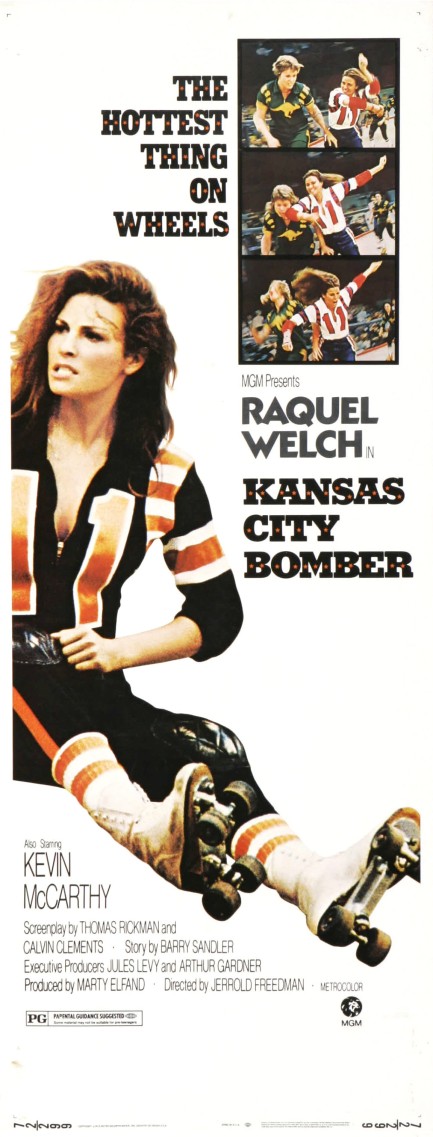
We've seen a number of Raquel Welch movies, and we appreciate her as a personality, but she wasn't a good actress. Not to speak ill of the dead and all that, but it's just true. She was unsubtle and inconsistent. She made some highly entertaining films, but an accomplished artiste she was not. Kansas City Bomber, which premiered in the U.S. today in 1972, is a drama that uses the milieu of roller derby but follows the blueprint of classic boxing flicks in which a fighter is eventually asked to take a dive in order to get ahead. Because of the gender flip involved in Welch playing this archetype, an extra layer of plot involves a usurious money man who's having his way with her in bed. But the theme of an athlete selling their soul remains familiar. Welch was a tremendous sex symbol, generally considered the hottest thing going ever since 1966's One Million Years B.C., so Hollywood, in its infinite wisdom, sometimes had her hook up with transparently undeserving men in her flicks so her male fans could scream, “Noooooo!” In this case it's too-old and too-fat team owner Kevin McCarthy. The jealousy that her preferential treatment by management causes among her co-skaters generates much of the movie's conflict, but a secondary drama is that Welch's character K.C. Carr must face one of life's most sobering realizations—that no matter how good a person you may feel (or pretend) you are, it's everyone else who gets to decide whether you're actually just an asshole. You can claim to be misunderstood, but it makes no difference at all.
In the film the other skaters think Welch is a sexual opportunist who'll do anything behind the scenes—and between the sheets—for advancement. Welch understands on some level that it's her face and body that get her to the top ranks of roller derby. She can go, “Gee! I guess he just really appreciates my talent!” all she wants, but nobody is buying it. We think that's a fine cinematic premise, but the problem with Kansas City Bomber is that it's silly and faddish. The drama is way over the top, and the introspection Welch should bring to the role doesn't resonate. Which is surprising. You'd think she'd really identify with this character—again, not to speak ill of the recently departed. We adore Welch. As a persona she was tops. As a portrayer of deep and affecting emotion... well...
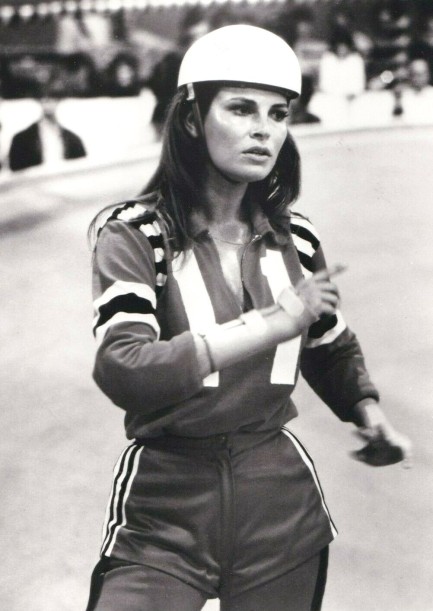 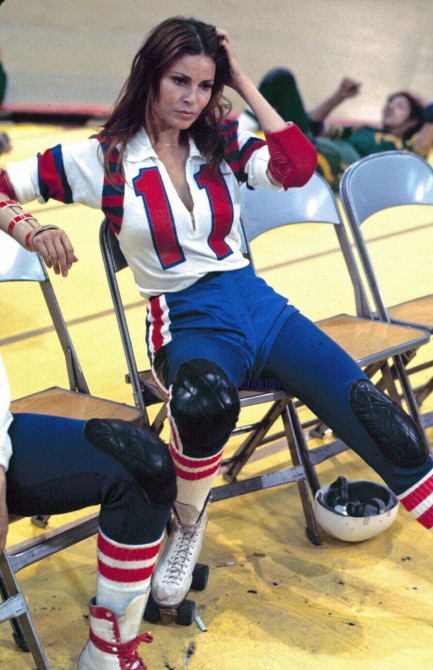 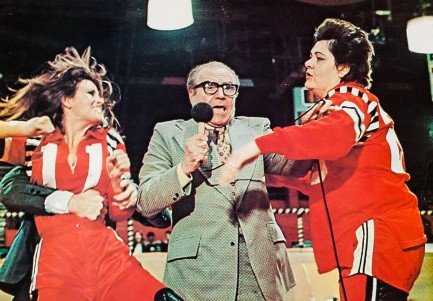 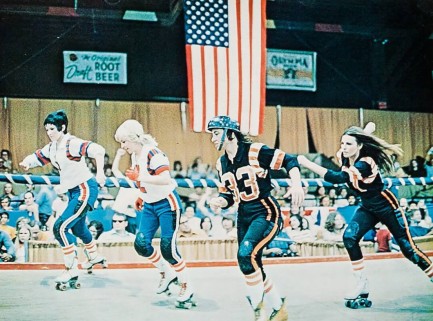 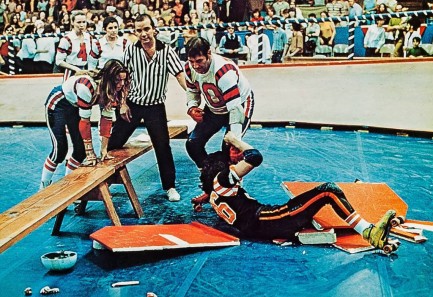 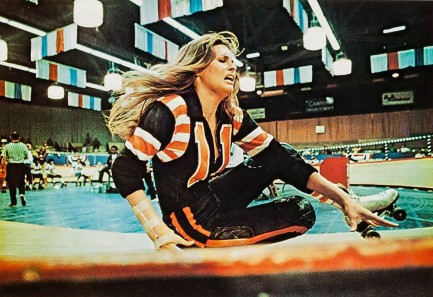 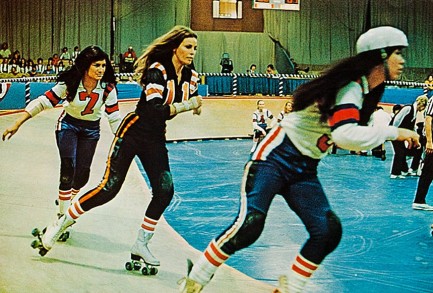 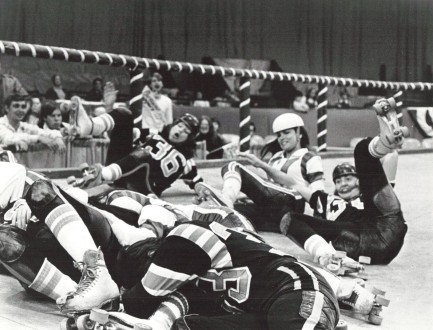 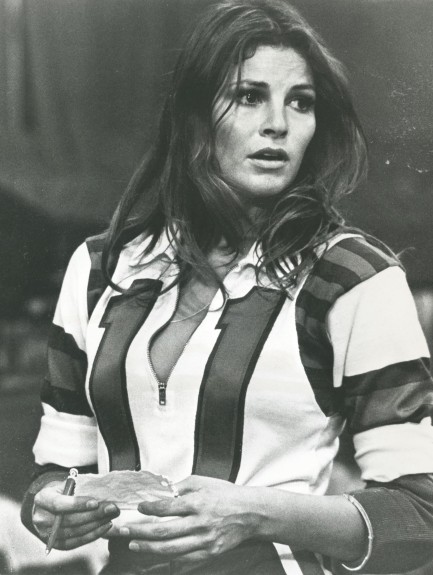 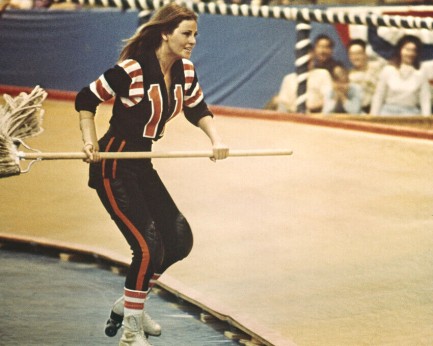 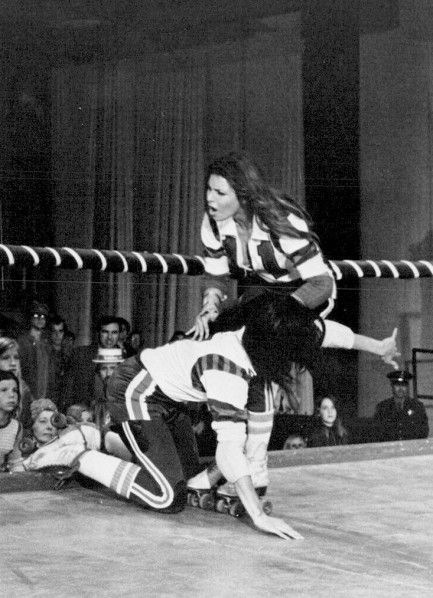 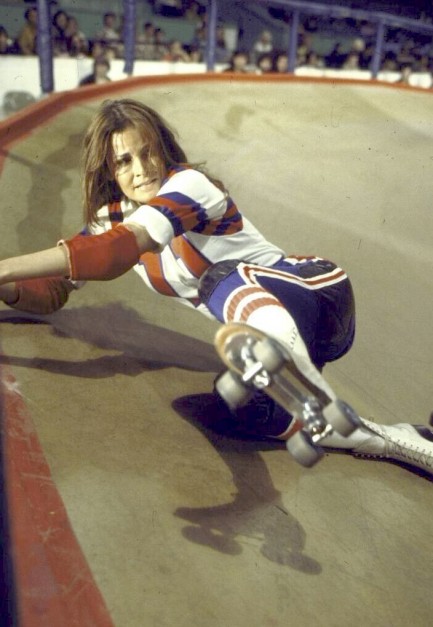  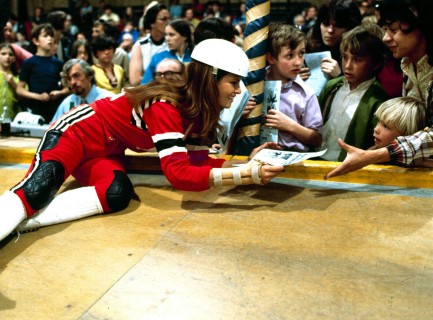 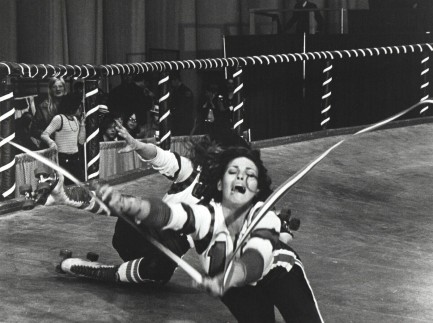 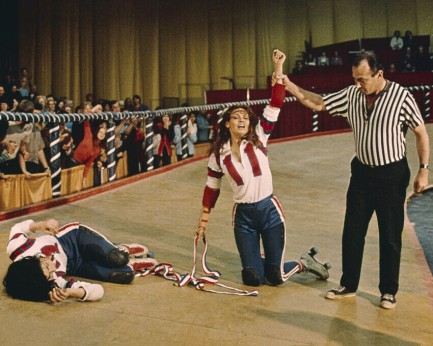 
 Sometimes you can't win no matter what you do. 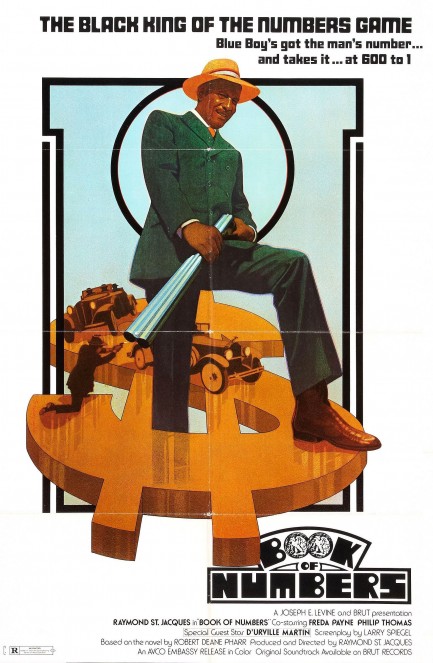
This poster was made for the crime drama Book of Numbers, which premiered in the U.S. today in 1973. The movie falls into the category of blaxploitation, but it's also an ambitious period piece, with a Depression era focus, a deep subtext, and a determination to portray a type of black American life rarely seen onscreen. During the lean years of 1930s a couple of waiters who harbor big dreams ditch food service and hatch a scheme to set up a numbers racket. They roll into El Dorado, Arkansas, get some local help, and soon are making cash faster than they know how to spend it. Their success inevitably attracts the attention of the law, organized crime, and the local Ku Klux Klan. Can the protagonists succeed against all these foes? And what does success look like for black men in the 1930s? No matter how much money they make, they are still not respected, safe, or free.
The movie stars future Miami Vice stud Philip Michael Thomas, along with Raymond St. Jacques, who produced and directed. Their two characters are decades apart in age, and vastly different in how they deal with constant racism. Thomas takes no guff from anyone, even when it costs him; St. Jacques will play any role expected of him by whites in order to survive. This doesn't sit well with the hot-headed Thomas, and leads to growing resentment. In our view, this is the most unique aspect of the film. It implies that because society forces black men to play roles, they can never be truly known by anyone outside their intimate circle. Robert Deane Pharr wrote the source material for this, and it must be an interesting novel, because it spawned a good movie. Book of Numbers is tough, adult, thought-provoking, and historically revealing. We recommend it for 1930s buffs, blaxploitation aficionados, and of course fans of Miami Vice.
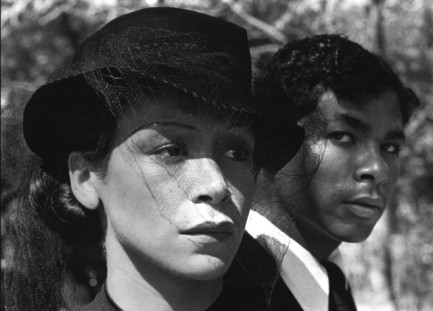 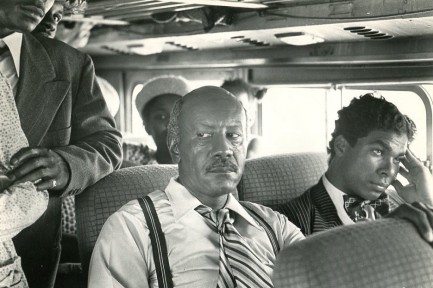 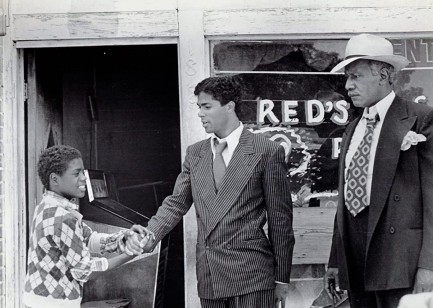 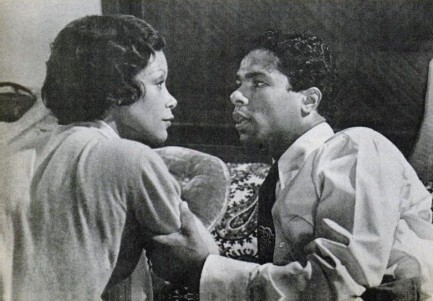 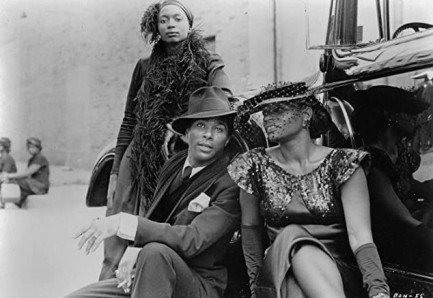
 Downtime always means pooltime in Hollywood. 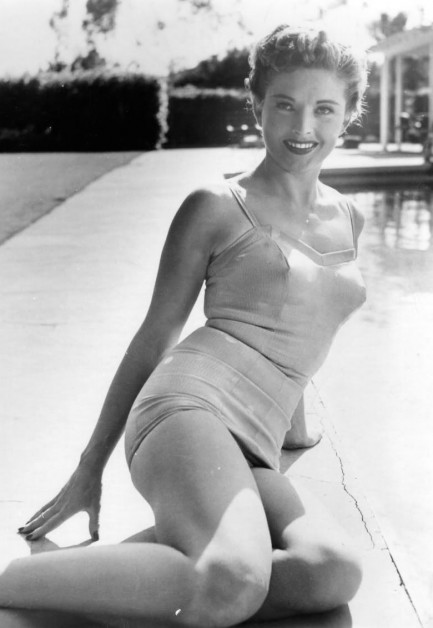
We like this shot of Coleen Gray, née Doris Bernice Jensen, with its casual day-off feel. Gray appeared in some very good movies, including Kiss of Death, The Killing, Kansas City Confidential, State Fair, and The Leech Woman (well, maybe that one's not so good, but it's really fun). All told, she amassed more than one hundred credits in cinema and on television. We obviously haven't seen them all, but our favorite role of hers is as Molly in Nightmare Alley. Interest in that one will pick up soon because it's being remade by Guillermo del Toro, with Willem Dafoe, Cate Blanchett, and Bradley Cooper in the leads. We can understand why a maestro of the weird like del Toro was attracted to that film, and we expect the remake to be very interesting. But do yourself a favor and watch the original sometime too.
 This one has arms and she knows how to use them. 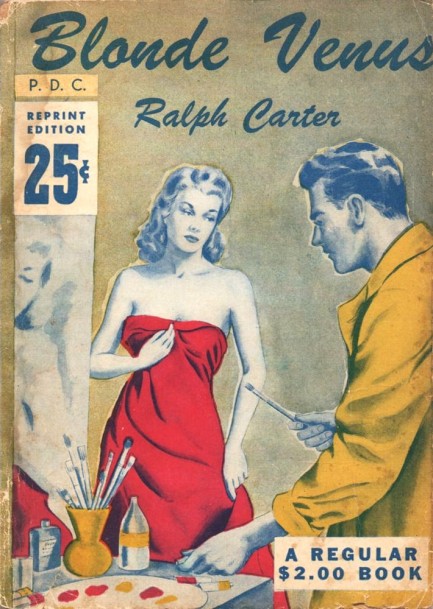
From meager expectations often great entertainment arises. Such is the case with Ralph Carter's 1945 melodrama Blonde Venus. It's the story of a Kansas farm girl who goes to New York City to become a writer and finds that people are more interested in her body than her brain. We were surprised by this one. It's better than we expected for three reasons. First, its protagonist Wandalee Fernald is uniquely likeable for a female character playing out the male author's outdated Madonna/whore dichotomy. Often male writers fumble that theme, but Carter makes his take on it work. Second, the narrative explores the change in attitudes toward sex that occurred during World War II, a time when the idea of female virginity before marriage was being temporarily tossed out the window due to the realization that life could be cut short. And third, in a country that was rapidly urbanizing, the story makes good use of the tension between smalltown provincialism and big city cynicism, a struggle Wandalee internalizes as she tries to find out who she is. Throughout the book we wondered whether she would end up with the backward hayseed hurt by her loss of purity or the jaded urbanite who accepts her as is but can't offer love in the romantic sense. Well, it turns out she chooses neither, and finds real love in New York City after all. That's a spoiler, but are you really going to seek out this flimsy old paperback? We don't think so. But if you happen to run across a copy, it's worth a read.
 Welch rocks and rolls on the derby circuit. 
Above is a Japanese poster for the U.S. drama Kansas City Bomber, which starred Raquel Welch, and featured Cornelia Sharpe and a very young Jodie Foster. The movie was inspired by the roller derby craze of the 1970s, which back then was simply cheeseball pro wrestling on wheels. We'll get into it a bit more later. After premiering in the U.S. in August 1972 Kansas City Bomber opened in Japan today the same year.
 Altman and company get gangsta in the heartland. 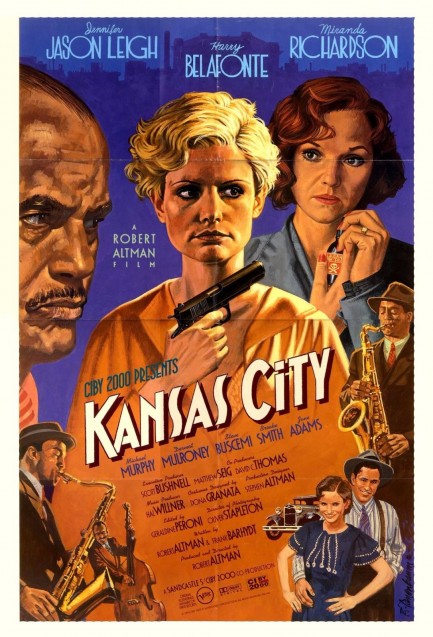
Auteur and maverick Robert Altman directed several films centered around crime, but perhaps only his 1930s gangster flick Kansas City truly fits the bill as a pulp style effort. The plot tells the tale of Blondie O'Hara, whose petty crook husband Johnny is captured by gangster Seldom Seen and held at a nightclub, prompting Blondie to kidnap the wife of a local politician in an attempt to blackmail him into using his connections to free Johnny. Sounds straightforward, but Altman's approach to this is leisurely and episodic.
Kansas City is generally considered to be a lesser effort from the legendary director, but even if it's not in the class of Short Cuts or M*A*S*H*, it has some points of interest—a slithery jazz score, lots of smoky nightclub scenery, Steve Buscemi warming up for another gangster role in the brilliant Miller's Crossing, Harry Belafonte playing it cool, and Jennifer Jason Leigh giving her actorly all as the drawling, flapperesque Blondie.
Another plus is this killer promo poster. When we saw it we had to watch the movie. But what's the most important reason to watch it? Altman, of course. It's always fun to see what a director does with the 1930s. What's the main drawback? Aside from its narrative quirkiness, we suspect its racial content may be a bit much for those with millennial sensibilities. But don't fault art for holding a mirror to history. When we can't reflect the past in cinema we'll have fallen pretty far. Kansas City premiered in the U.S. today in 1996. 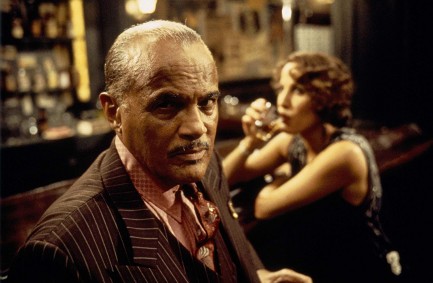 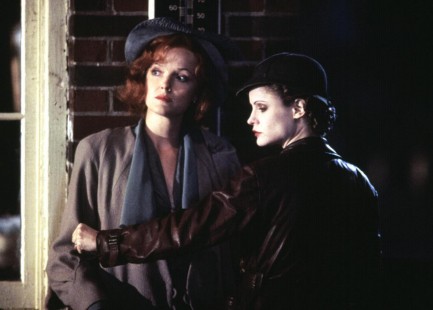 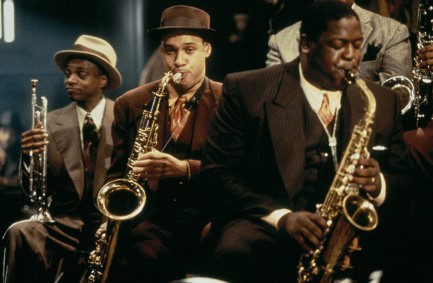 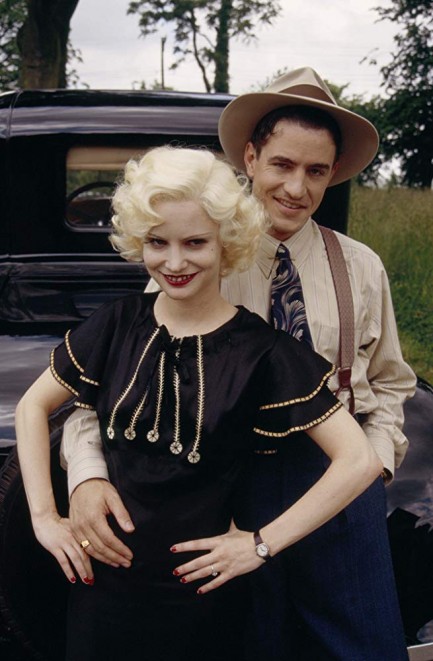 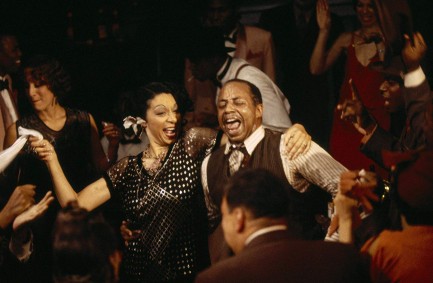 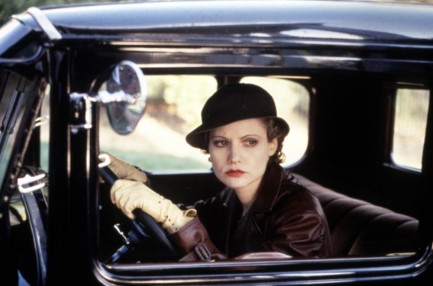
 You oughta be in pictures. 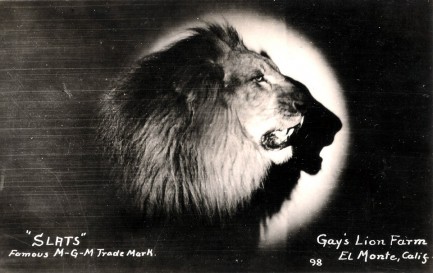
Metro-Goldwyn-Mayer's famed lion mascot, who roared at the beginning of every MGM picture, was known as Leo. But like an actor playing a role, the lions used in those famed openings had real names. The first lion was used by MGM's predecessor Goldwyn Pictures. He was named Slats, and you see him above in this profile shot made at Gay's Lion Farm in El Monte, California. Slats played Leo for Goldwyn and MGM from 1916 to 1928, to be followed by such luminaries as Jackie, Teller, Tanner, George, etc. Slats was the only lion that didn't roar, because he got the gig before sound was introduced into film. While he's immortal as a logo, he died in 1936. For his faithful service he was skinned and his hide was put on display. It's still around, at the moment residing at the McPherson Museum in McPherson, Kansas.
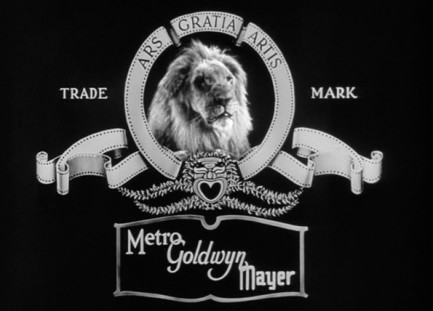 Edit: We got an email from the McPherson Museum's Education Coordinator Emily Nelson, which follows:
Hello! I am reaching out regarding the above article about MGM's "Leo the Lion." This article mentions McPherson Museum having Slats' skin. We do not. A grave error occurred years ago, and one of our former directors was led outrageously astray. For quite a while, we believed we did have a Leo. Our late curator, Brett Whitenack, put in hours upon hours of research and he found that we acquired our lion rug before any of the MGM lions had died. We believe we may have a publicity stand-in, but we do not have an authentic, recorded MGM lion. I am hoping an amendment could be added to your article to correct this error. Thank you. Correction made, Emily. They come with the territory, because research via internet has its hazards—namely false information. We try to get everything correct. Thanks for writing in.
 Don't! That's only for salads or desserts! 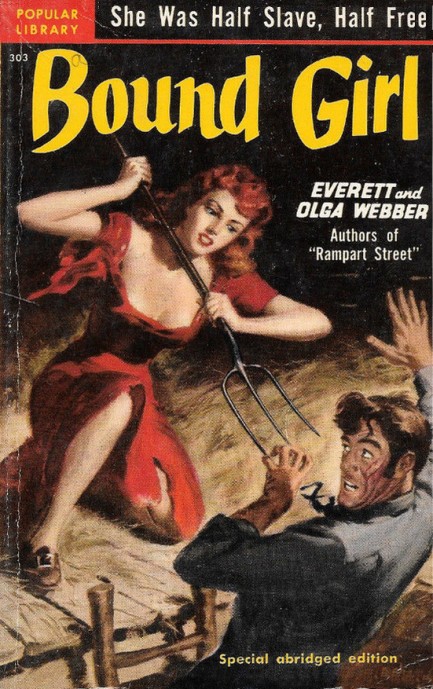
This is very nice cover work for Everett and Olga Webber's U.S. Civil War novel Bound Girl. The art is by Sam Cherry, one of the best. After a 1949 hardback debut the book came out as this Popular Library paperback in 1950. The bound girl of the novel is an indentured servant living on the Kansas-Missouri border who experiences both war and various romantic ups and downs. Possibly her love problems stem from bad manners. After all, who'd want to date someone who doesn't even know that a three prong fork isn't for meat courses?
 A case of double trouble for wrongly convicted Kansas man.  
Speaking of doubles, put this one in the amazing coincidences file. A Kansas man who spent seventeen years in prison was released Monday when a judge admitted that an exact double may have committed the crime for which he was jailed. Richard Jones, the man who was released, appears on the right in both mugshots, while an almost identical man appears on the left. This doppelgangbanger is an ex-convict who lived in Kansas City, Kansas in the vicinity of where several people were robbed at gunpoint in 1999, while Jones lived with his wife and kids across the state line in Kansas City, Missouri. Since Jones was convicted only on eyewitness identification by the victims, and there was no physical, DNA, or fingerprint evidence to link him to the crime, a judge ruled that there was sufficient cause to order his release. Interestingly, after years of failed legal appeals it was Jones himself who broke the case by finally chatting with inmates in prison, who told him that he bore an uncanny resemblance to an ex-con named Ricky. Just over a year ago Jones contacted the Midwest Innocence Project, and they located a photo of this Ricky character, who it turned out had actually been questioned about the original robbery but had denied involvement. Why his interrogators failed to notice the resemblance to the accused is a mystery that is yet to be unravelled. Maybe Ricky had a perm that day. Anyway, photos were presented to one of the victims of the robbery, two eyewitnesses, and the prosecutor of the case, and none could tell the two men apart. Jones, who maintained his innocence all along, said, “When I saw the picture of my double it all made sense to me.”
The irony is strong with this case. Consider: it was mere proximity to the thief that got Jones sent upstate, but it also turned out to be proximity that led to convicts in the same prison as Jones knowing of Ricky. If Jones had been sentenced to a different prison he'd still be behind bars, which, while he must be thrilled to be breathing the sweet air of freedom, is a thought we imagine keeps him up nights. But that's not the only irony here. Ricky will not be charged with a crime. How can he be? The victims and eyewitnesses can't be relied upon. Absent physical evidence, DNA, or fingerprints there's no way to be sure he was the perpetrator. It could have been Jones, his double. It wasn't. But technically, it could have been. The lesson here is crystal clear—if you hear of someone that looks like you, take the opportunity to commit a heinous crime and you'll get away scot-free.
 The best defense is a good offense. 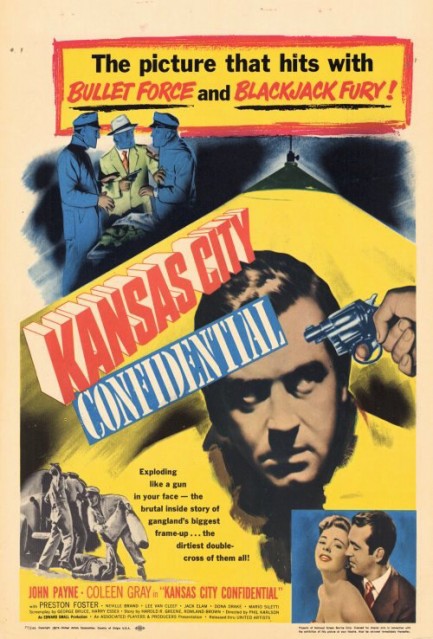
Four robbers knock off a bank in Kansas City with plans to split the money after the heat has cooled. The mastermind behind the job has arranged it so the crooks don't meet before the job, and wear masks during it, thus can't possibly identify each other. But each man has an ace, torn in half to create a unique mate, to match with the second half and confirm his identity when the time comes. It all sounds clever and foolproof, except the mastermind has framed someone for the robbery to throw police off their trail, and when this man is arrested but turned loose from police custody due to lack of evidence, he decides to track down the men who set him up.
This character, played by John Payne, is our anti-hero and looming wrench in theives' works. He quickly picks up the trail of one of the robbers in Mexico, but the police have too. In trying to discover who framed him, Payne could look to these lurking cops as though he's a member of the gang—if they spot him, that is. When Payne sees an opportunity to adopt one of the robber's identities—no difficult task since they've never seen each other—he leaps at it, but this draws him in even deeper. He's now in danger from the men he's playing imposter to, while to the cops he looks like a participant in the robbery.
There are more twists, including a star-crossed romance with Coleen Gray, but we'll stop there. This is a nice, multi-layered film noir, with good performances all around. Considering the risk Payne has to take we aren't sure we fully buy his motivation, but once he's made the decision there's no easy way out, and it's fun to watch him threaten and beat his way up the chain to the top guy. Coleen Gray always adds a nice element to any movie she's in, and Lee Van Cleef is good in a tough guy role. The only serious blemish here may be the silly final minute, but you shouldn't let it ruin the film for you. We recommend giving this one a whirl. 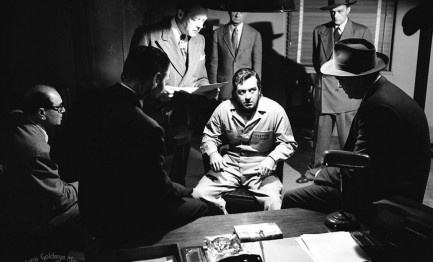

|
 |

The headlines that mattered yesteryear.
2003—Hope Dies
Film legend Bob Hope dies of pneumonia two months after celebrating his 100th birthday. 1945—Churchill Given the Sack
In spite of admiring Winston Churchill as a great wartime leader, Britons elect
Clement Attlee the nation's new prime minister in a sweeping victory for the Labour Party over the Conservatives. 1952—Evita Peron Dies
Eva Duarte de Peron, aka Evita, wife of the president of the Argentine Republic, dies from cancer at age 33. Evita had brought the working classes into a position of political power never witnessed before, but was hated by the nation's powerful military class. She is lain to rest in Milan, Italy in a secret grave under a nun's name, but is eventually returned to Argentina for reburial beside her husband in 1974. 1943—Mussolini Calls It Quits
Italian dictator Benito Mussolini steps down as head of the armed forces and the government. It soon becomes clear that Il Duce did not relinquish power voluntarily, but was forced to resign after former Fascist colleagues turned against him. He is later installed by Germany as leader of the Italian Social Republic in the north of the country, but is killed by partisans in 1945.
|

|
|

It's easy. We have an uploader that makes it a snap. Use it to submit your art, text, header, and subhead. Your post can be funny, serious, or anything in between, as long as it's vintage pulp. You'll get a byline and experience the fleeting pride of free authorship. We'll edit your post for typos, but the rest is up to you. Click here to give us your best shot.

|
|
























































































































